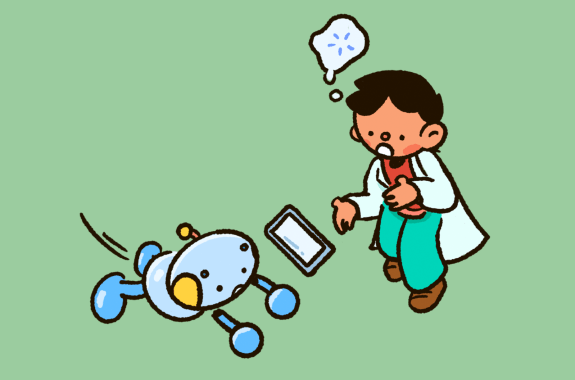Grade Level
6 - 8
minutes
15 min - 1 hr
subject
Life Science
stem practices
Planning and Carrying Out Investigations
Activity Type:
neuroscience, brain, After School Activity, family activities, STEAM
Este recurso está disponible en español. This resource is available in Spanish.
Jump to: Video | Puzzle | Trivia
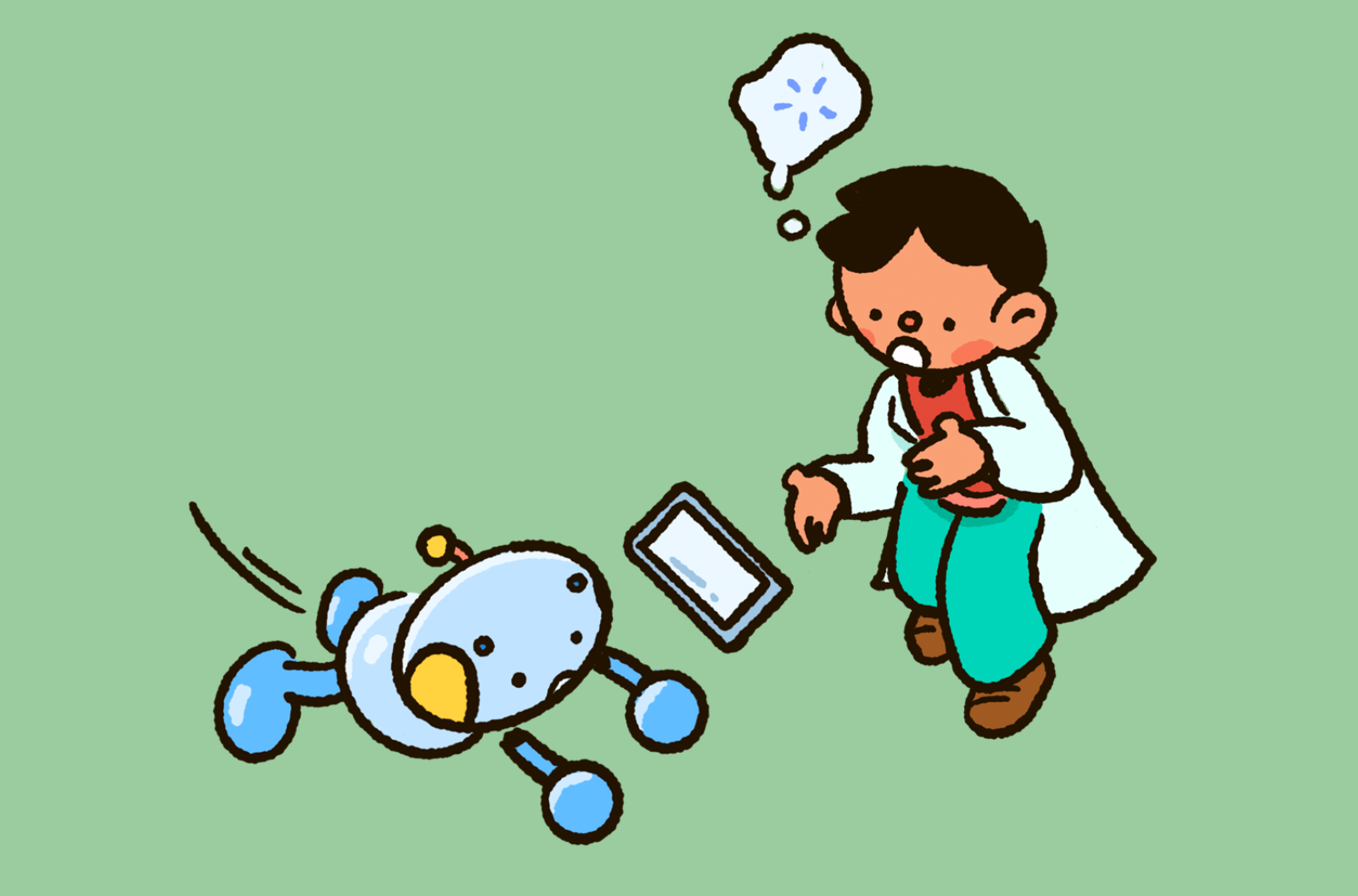
Have you ever dropped your phone? Maybe you weren’t paying attention to what you were doing or were excited to show a friend a photo. Suddenly, the phone slipped from your fingers and headed towards the ground. What did you do? Did you try to catch it?
Let’s test your reaction time. You’ll need a friend and a ruler. (If you don’t have a ruler, a scrap of cardboard, a wooden spoon, or even a stick from outside will work. Just mark it every inch or so with a pencil or some tape.)
Here’s what to do:
- Stand facing your partner.
- Have your friend hold the ruler in one hand near the end, where the highest number is located.
- You will put your open index finger and thumb near the bottom of the ruler as if you are about to pinch it. Be ready to grab the ruler when it is dropped.
- Your friend should drop the ruler without announcing when they will do so.
- You will try to catch the ruler as fast as you can after it is dropped.
- Read the number on the ruler where you caught it to measure how far it fell before you caught it. The lower the number, the faster your reaction time.
- Repeat the experiment several times.
Does your reaction time improve with repetition?

This short experiment demonstrates reaction time or the time between a stimulus and a reaction to that stimulus. In this case, the stimulus is the dropping ruler. Your eyes send a signal to the brain’s cortex, and you react by catching the falling ruler. However, there’s more going on.
Did you find yourself watching the ruler closely for movement? Did watching the ruler make it easier to catch it? By the second or third try, you were probably paying very close attention to when the ruler was dropped. Attention is the ability to apply your mind to something and to focus on it. Focusing your attention on the ruler’s movement could improve your reaction time. Why?
Many Parts Of The Brain Control Attention
Many areas of the brain are involved in paying attention, including the frontal, occipital, and temporal lobes. One function of the prefrontal cortex located in the frontal lobe is attentional control. It helps with selective attention, or the ability to focus on one stimulus while ignoring other stimuli (the plural of stimulus). The visual cortex in the occipital lobe processes visual information, while the auditory cortex in the temporal lobe processes auditory information. All these regions of the brain that are processing information are necessary to help you perceive and focus on stimuli in your environment.
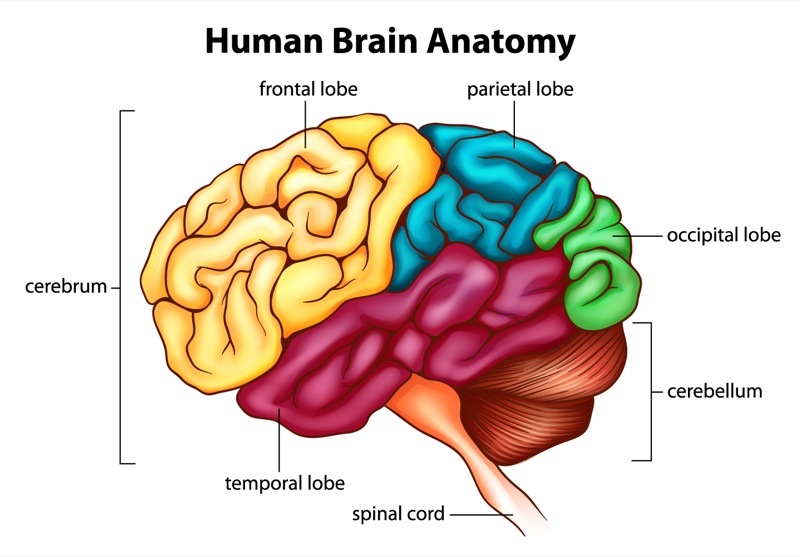
What Does It Mean To Pay Attention?
Have you ever seen an image like the one below? It’s called a hidden object game. In this case, you need to find ten hidden objects. What strategies would you use to help find them? Where would you begin?
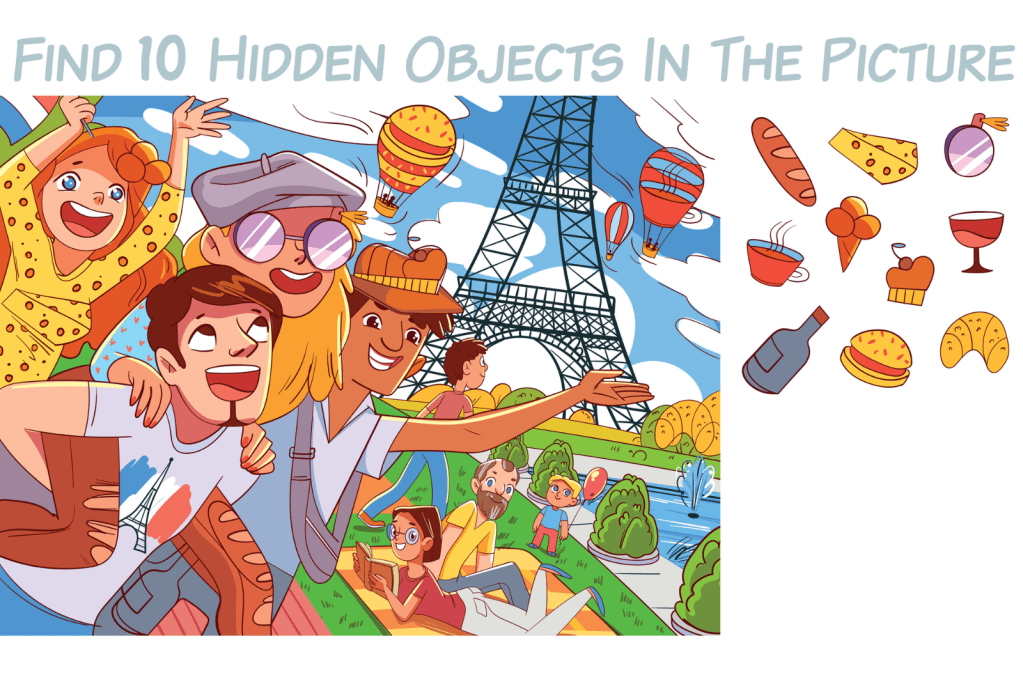
This game is fun and challenging because it requires you to focus your visual attention to find hidden objects. Your brain uses visual attention and spatial memory to search for objects to solve a puzzle like this. Games like these can help strengthen connections between your eyes and brain, improve visual perception, and improve attention.
There are two main modes for visual attention. In overt visual attention, if you are sighted, you can physically direct your eyes to look at a stimulus. You don’t ignore everything else around you, though. Covert visual attention allows you to monitor what’s around you without moving your eyes to focus on it. That’s why if you’re playing soccer, your eyes can actively follow the ball while at the same time observing that there are other players on the field. Your attention is spread between overt, i.e. moving your eyes to follow the ball, and covert, your awareness of the other players.
Auditory attention refers to the ability of hearing individuals to be selective and concentrate on individual sounds in a noisy environment. Imagine being with friends at a crowded, loud cafeteria or restaurant. Your bestie is spilling the tea about something that just happened in class. There is noise all around you, but by focusing and leaning in, you’re able to hear your friend’s story and pay attention. How? You’re using selective attention, which is the ability to concentrate on one thing or stimulus while ignoring others. Selective attention varies from person to person and depends on the number and type of distractions in an environment. Focusing while in a busy place can be a challenge!
When you concentrate on one thing, like a conversation, sometimes you block everything else out. Inattentional blindness is when you focus so much on one thing that you don’t notice new things happening around you—like the bell ringing to signal lunch is over!
As you head back to class, you probably walk the hallways on “autopilot,” because you’ve done it dozens of times before. Maybe you’re thinking about your conversation at lunch. You may walk right past a banner announcing the spring musical without noticing. That’s called change blindness, and it happens when your attention is focused elsewhere, or the changes are so unexpected that they go unnoticed.
Use Your Attention Wisely
Attention is a limited resource.
Multitasking is not a good idea, especially if you are learning new things. When you divide your attention, your brain can struggle to know where to direct its focus, especially if the tasks are unrelated. So, if you’re trying to study, constant pings from your phone will make it much harder for you to pay attention and for your brain to build memories. Instead, try removing distractions to help you focus.
For example, when traveling with an adult in the car or on the subway, you may play on your phone to pass the time. When you arrive at your destination, you may not know exactly how you got there because you weren’t paying attention to the trip—you were paying attention to your phone.
Speaking of being on your phone and in the car, while you may not be driving yet you may soon be. So remember that even glancing at a phone while driving is dangerous. This momentary distraction takes your attention away from pedestrians, cyclists, other cars! This is why drivers are reminded not to use their phones while operating a car. Distracted driving is incredibly risky!
Luckily, we can improve our ability to pay attention. Here are a few things you can do every day to strengthen your focus.
- Mindful sitting: Think about how you position your body when you’re really interested in something. Your body position can signal your brain you’re ready to pay attention. So, choosing to sit in that position can tell your mind to be alert. We call this mindful sitting. Find a quiet, still position that is comfortable for you to sit in for a few minutes and see if that helps your brain focus.
- Mindful breathing: You breathe all the time, but this time, be mindful and think about the process. Breathe in and out slowly, paying attention to how the breath moves through your body. Repeat. This technique sends messages to the brain to slow down and pay attention, and it’s also a great way to cope with stress.
- Mindful listening: Listening is more than hearing. It takes time, effort, and attention. Sit in a mindful sitting position (as above) and gently close your eyes. Focus on the first sound you hear and listen until you can’t hear it anymore. Then, focus on any sound in the room, outside the room, or inside your body.
Brain Teaser
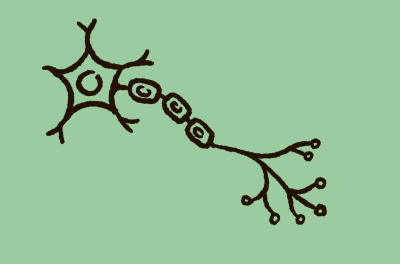
Have you seen the image to the left somewhere? Did it catch your attention in the previous Hack Your Brain puzzles? This drawing of a neuron was hidden somewhere in every puzzle you have completed in the adventure so far.
To unlock the final secret code, find this neuron image in each previous Hack Your Brain puzzle. Look for a number located near each neuron. Once you have discovered all four numbers, use the image clues in the final puzzle below to determine the order of the numbers for the final secret code. The images correspond with different Hack Your Brain activities and puzzles.
Once you have the code, enter it into the Science Friday Enigma Machine to complete your adventure!
Did you love this challenge? This activity and puzzle are part of the Hack Your Brain neuroscience escape room.
Check Your Knowledge
See how much you remember from your reading! These ten questions will test your recall. Both versions below are free. Kahoot! is a fun game-based platform with pictures and music. Google is a more traditional online quiz format.
Working with a group? You can host your own Kahoot! live or copy the Google form and assign it to a class. Both require logins.
Want To Learn More?
Here are some great resources to learn more about attention.
- Want to learn more about your senses and how they work with your brain? Get the details on vision, hearing, and touch.
- Want more suggestions on how to increase your attention span? There are many attention strategies you can try. What works best for you?
- Try the activities in these short videos for additional mindful ways to practice attention!
- Interested in building your focus power? Use these brain games to help you learn to sustain attention and ignore distractions.
NGSS Standards:
MS-LS1-8 From Molecules to Organisms: Structures and Processes: Gather and synthesize information that sensory receptors respond to stimuli by sending messages to the brain for immediate behavior or storage as memories.
Special thanks to the Dana Foundation for funding Hack Your Brain.

Credits
Lesson by Svea Anderson
Neuroscience Consultation by Daisy Reyes
Game Design by Lucas Leprince
Illustration by Joy Ho
Puzzle Illustration by Fai Kosciolek
Developmental Editing by Sandy Roberts
Copyediting by Ariel Zych
Digital Production by Ariel Zych
Educator's Toolbox
Meet the Writers
About Svea Anderson
Svea Anderson is a twenty-year veteran educator who never hesitates to step out of her comfort zone and try something new. She enjoys a challenge and never passes up an opportunity to learn something new.
About Sandy Roberts
Sandy Roberts is Science Friday’s Education Program Manager, where she creates learning resources and experiences to advance STEM equity in all learning environments. Lately, she’s been playing with origami circuits and trying to perfect a gluten-free sourdough recipe.
